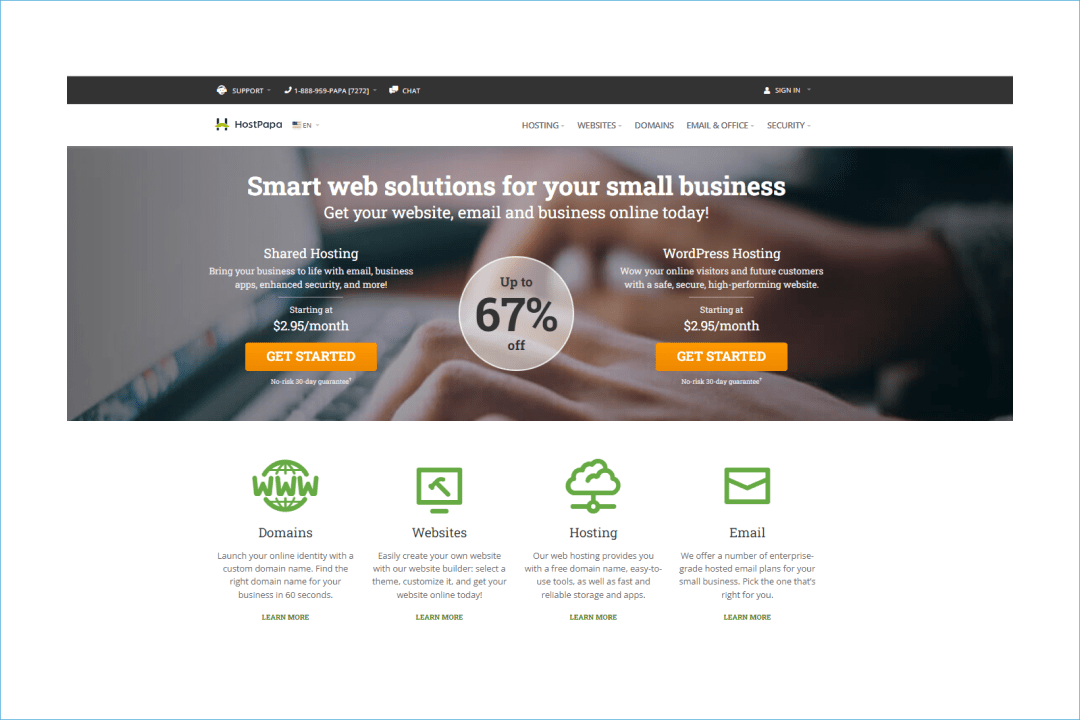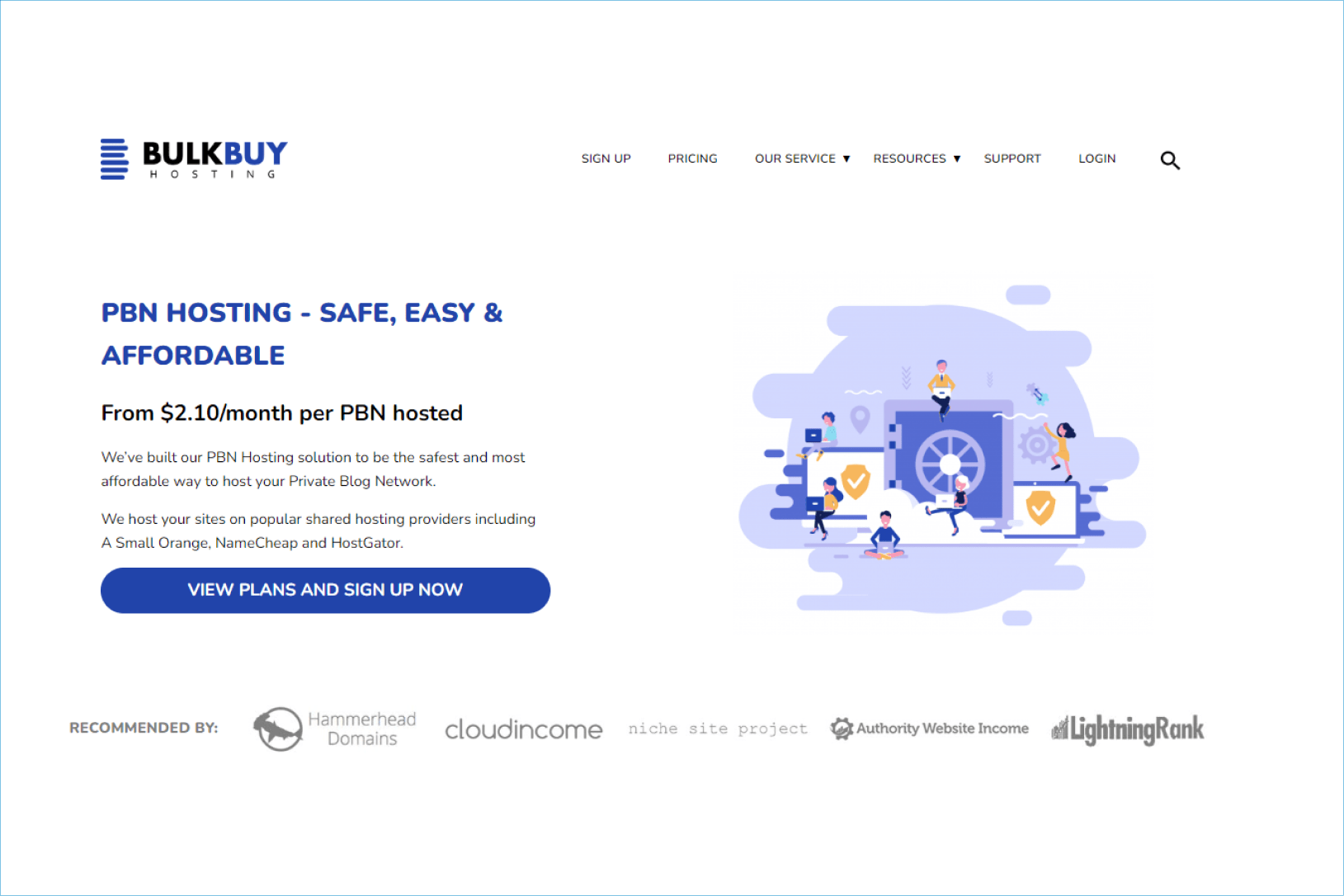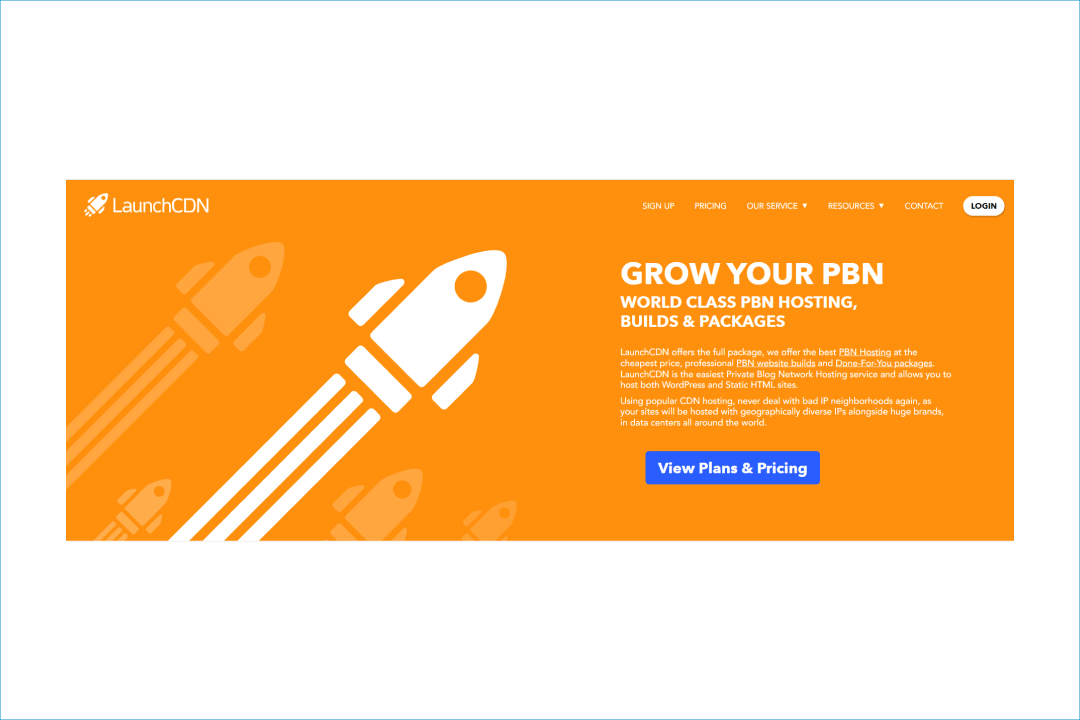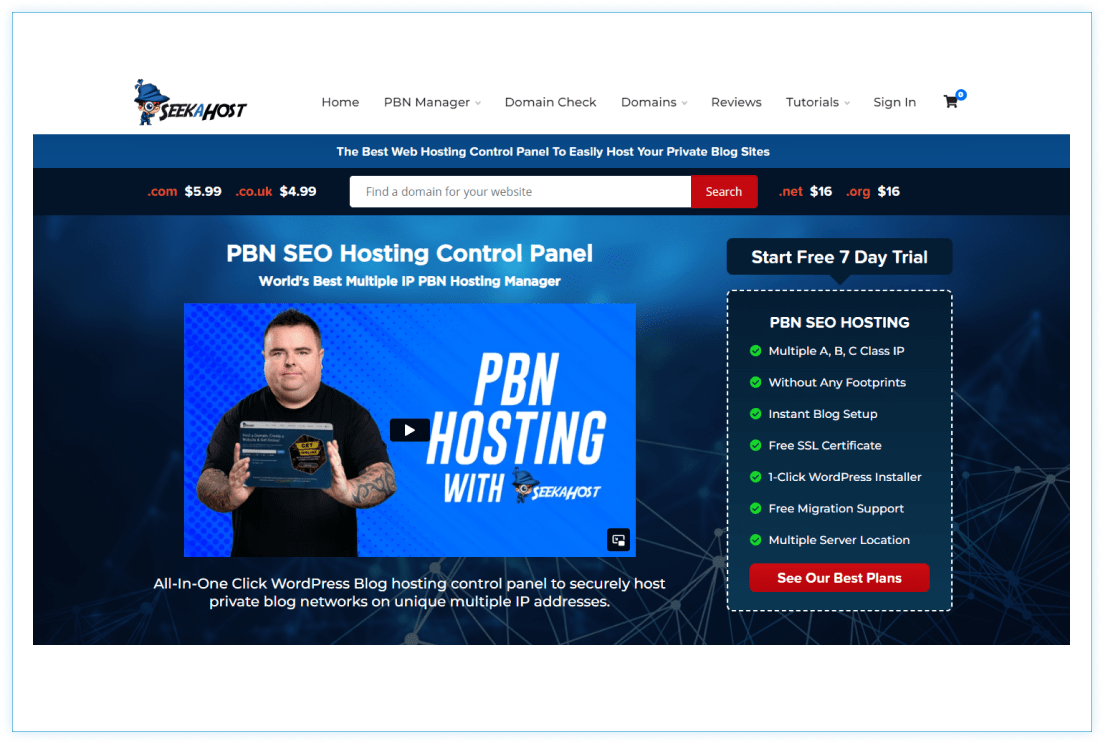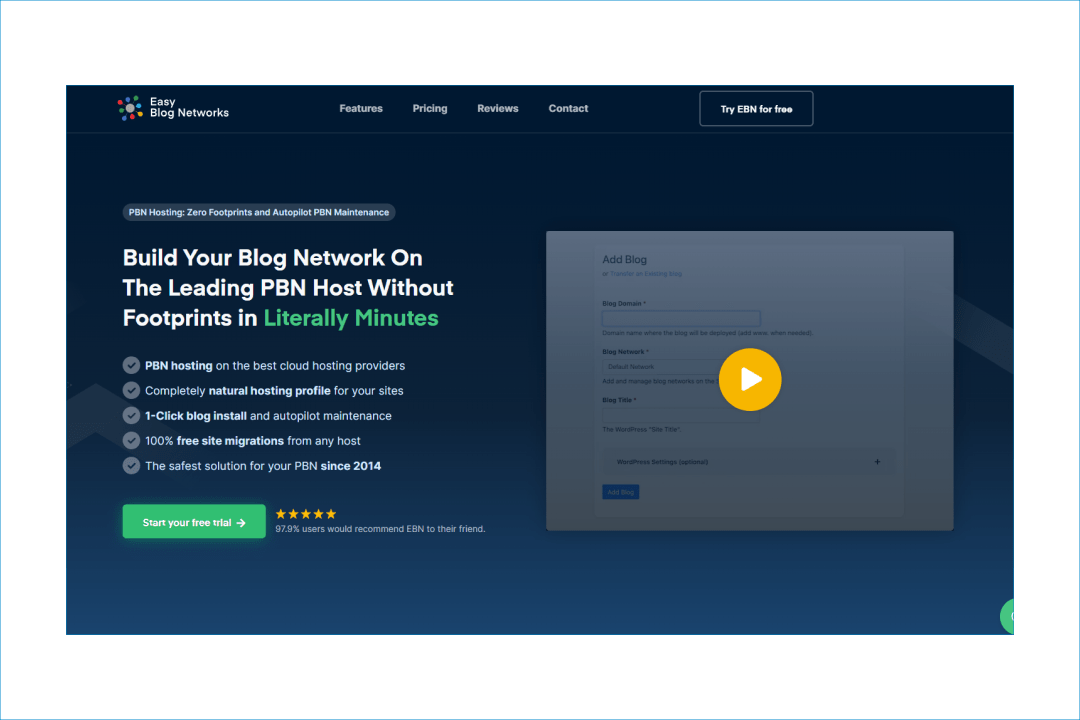
In the intricate SEO world, backlinks are essential in determining a website’s authority and relevance.
Backlinks are links from one website to another. They serve as a vote of confidence, indicating to search engines that your content is valuable and relevant. However, not all backlinks are created equal.
In this article, we will explore the different types of backlinks and their impact on your website’s SEO.
What Are Backlinks?
Backlinks, also known as inbound or incoming links, are links from one website to another through an anchor text. They are important for SEO because search engines like Google view backlinks as votes of confidence, indicating relevance, quality, and authority to the web page.
You should know that not all backlinks are the same. Good backlinks help a website get a higher ranking in search engine results. Having one good backlink from an authoritative site can be more powerful than having 100 low-quality ones.
So, let’s explore the different types of backlinks and how you can use them.
Backlink Types Based on The Link-building Strategy
We’ll start with different types of backlinks related to certain link-building strategies. Each type has pros and cons, so knowing how they work is crucial to making a good plan for building links.
Organic Backlinks
Organic backlinks, also known as natural backlinks, are links that are naturally inserted into one’s website and redirect users to another website. These are links that the other webmaster puts on himself, without our request, because he considers our content to be useful and reliable.
According to Google guidelines, this is the right way to get links.
To earn organic backlinks, it’s crucial to create high-quality, original content that provides value and a solution for readers.
Additionally, organic backlinks can help build relationships with other websites and contribute to a website’s long-term visibility and search positions. Overall, organic backlinks are an important aspect of SEO and can significantly impact a website’s performance and reputation.
Guest Post Links
Guest post links are a type of backlink that comes from writing and publishing content on someone else’s website or blog. When you contribute a guest post, you usually get the option to include a link back to your website within the content or in the author bio.
These links are valuable because they provide a pathway for readers to discover more about you and your work and signal to search engines that your website is approved by the website hosting your guest post.
The link being in an article we wrote helps search engines understand our site’s focus and potential rankings. For instance, if our site gets many links from pages discussing fashion, search engines assume our site is also about fashion.
Links from newly published content are seen as natural and safe, as websites commonly gain links from fresh, relevant material.
Press Release Links
Press release links are backlinks that come from distributing a press release. A press release is a written communication that shares information about an event, product launch, company announcement, or other news with the media.
These links are often considered a part of an online marketing strategy to generate visibility and promote the content or news mentioned in the press release.
While press release links can contribute to a website’s backlink profile, it’s important to note that their impact on SEO may vary.
Using press release links is a common way to promote content, but they may not be as effective for building links since Google treats links in press releases as unnatural. To avoid potential penalties from Google, you should make your press release links “nofollow.”
Backlinks From Forums and Q&A Websites
Getting links from forums and Q&A sites can be beneficial for your website. These links often relate to your interests or industry, making them a good match for your content.
When you engage in conversations on these platforms, people might click on your links, bringing more visitors to your website and expanding your online presence.
Also, having links from different types of places is generally good for your website’s overall health. Just make sure you choose reputable forums and Q&A sites, avoid being too promotional or spammy, and keep in mind that while some of these links might not boost your search engine power, they can still drive valuable traffic to your site.
Backlinks From Blog Comments
Leaving links in blog comments can be a good way to join discussions and share helpful information. When you comment on a blog post and include a link related to the topic, it adds more value to the conversation. If people find your comment interesting, they might click on the link and visit your website.
However, it’s important to write genuine and relevant comments, as spammy or unrelated ones could be removed. Some blogs use a setting that doesn’t boost your website’s search engine ranking with these links, but they can still bring in visitors.
Niche Edit Links
Niche edit links refer to adding a link to an existing piece of content within a specific niche. Unlike traditional link-building methods that involve creating new content, niche edits involve placing links within already published articles or blog posts.
Although this technique works, it is an unnatural way to get links, and you should be very careful when using it. Quality and relevance remain essential, and manipulating existing content purely for the sake of adding links may be considered a violation by search engines.
Citation Links
Citation links are references to your business details, like name and address, on websites such as directories or review platforms. These links are essential for local businesses as search engines use them to verify your legitimacy and location relevance, impacting your visibility in local searches. Consistent and accurate citations across various platforms help boost your local search rankings, making it easier for potential customers nearby to find your business online.
Web 2.0 Links
Web 2.0 links are backlinks created on web platforms that allow user-generated content, collaboration, and sharing. Examples include blogging sites, social media platforms, and content-sharing sites like Facebook, YouTube, and Reddit.
With Web 2.0 links, users can contribute content and include links back to their own websites.
These links are often used as part of SEO strategies to increase a website’s visibility and authority. However, it’s important to ensure that the content shared on these platforms is relevant, valuable, and follows the rules of each site to maximize the effectiveness of Web 2.0 links in improving search engine rankings.
PBN Backlinks
PBN (Private Blog Network) backlinks are links received from a network of privately owned websites that are used to link to a target website. These sites are typically owned and controlled by the same person or organization. They are designed to manipulate search engine rankings by artificially boosting the authority of the target website.
PBNs are the only scalable way to obtain homepage links and links from specific niches, markets, and languages. However, you should know that PBN backlinks are considered a black hat SEO tactic and are against Google’s guidelines.
Backlink Types Based on The Link Attribute (rel=’)
The next group of backlinks are categorized by the ‘rel=’ attribute. This attribute plays an important role in how Google sees a link, determining whether it should pass, follow, or categorize it as sponsored or user-generated.
Dofollow Links
Dofollow links are a type of hyperlink that, when included in content, allow search engines to follow the link and pass authority from the source page to the linked destination. These links are valuable in SEO because they contribute to the target site’s search engine ranking.
In HTML, a “dofollow” link is a regular hyperlink and look like this: <a href=”quirk.biz” rel>Quirk Biz</a>
Unlike nofollow links, which don’t transfer authority, dofollow links are seen as endorsements, signaling to search engines that the linked content is credible and relevant. While do-follow links are beneficial for SEO, it’s important to maintain a balance with other types of links for a natural and diverse backlink profile.
Nofollow Links
Nofollow links are hyperlinks that include a “nofollow” attribute in the HTML code, signaling search engines not to follow the link or pass on authority to the linked page.
Example: <a href=”quirk.biz” rel=”nofollow”>Quirk Biz</a>
These links are often used to indicate that the link shouldn’t be considered an approval.
In SEO, nofollow links are commonly used for user-generated content, sponsored links, or situations where a website doesn’t want to testify to the trustworthiness of the linked content.
While nofollow links don’t directly contribute to the target page’s search engine ranking, they can still be valuable for referral traffic and maintaining a natural link profile.
Sponsored Links
Sponsored links are paid advertisements that appear on search engine results pages or other websites. They are designed to promote a specific website or product and can be purchased by businesses to increase brand awareness, drive traffic, and boost conversion rates.
These links often include a “sponsored” attribute in the HTML code: <a href=”quirk.biz” rel=”sponsored”>Quirk Biz</a>
In terms of SEO, search engines recommend marking sponsored links with the “nofollow” attribute to indicate that they shouldn’t influence search rankings. This helps maintain transparency and prevents potential manipulation of search results. Sponsored links play a significant role in online advertising and can drive targeted traffic to the advertiser’s website.
UGC (User-Generated Content) links
The UGC (User-Generated Content) link attribute is used to identify links that are part of user-generated content sections of websites, such as comments, forum posts, or any other content sections where users can add content.
Example: <a href=”quirk.biz” rel=”ugs”>Quirk Biz</a>
This attribute is used to mark up all links posted in user-generated content to help search engines understand the nature of these links.
Backlink Types Based on Their Position on the Website
The type of backlinks based on their position within the content and the website’s structure can impact their SEO value.
They can be:
- Links in Text Content: These links are used within the content of a webpage. The general rule of thumb is to always link keywords, as this can help improve search engine optimization.
- Links Inside Images: This allows users to click on the image and be directed to the specified URL address.
- Site-Wide Links: Site-wide links are links that appear on every page of a website. These links can be used for navigation, footer links, or other purposes.
- Links in the Widget: These links are used within web widgets, such as interactive elements or applications, that allow users to navigate to other content or websites.
Backlink Types Based on Cost
Based on the search results, backlinks can be classified into three categories based on cost:
- Free Links: These are the links you earn without spending any money. They come when people naturally appreciate your content and decide to share it because they find it valuable.
- Paid Links: Every link that you pay for (be that Guest Post, Niche edit, or Homepage link) is considered a Paid link and is against Google guidelines for obtaining links. While in the past, link building wasn`t a multi-billion industry (as it is in 2023), different strategies for acquiring free links worked quite well. Nowadays, every webmaster knows that linking to another website is a valuable service and will most likely require payment if you reach out to them for a free link, regardless of how good your content, website, or pitch is. This pretty much leaves the majority of the webmaster with no choice other than paying for links. Still, you can make sure that your link at least looks “natural” and that there is a real reason for your site to receive the link.
- Link Exchange: These links are gained by exchanging services instead of money. The idea goes beyond a simple exchange of links between two sites. Consider a scenario where one owner has Site A, and another has Sites B and C. If Site A links to Site B, the arrangement extends to Site C, linking back to Site A. In summary, there’s a two-way linkage: Site A -> Site B and Site C -> Site A.
What Types of Backlinks Are Valuable?
Through our work, we’ve reached an obvious conclusion about links: they’re most effective when they are do-follow, coming from strong sites with substantial traffic and closely aligned with our niche.
However, gaining these kinds of links can be costly and rare. When these become scarce, our strategy shifts to diversifying.
As a result, when the supply is limited, we include links from strong sites in more general niches or weaker sites that fall within our specific niche.
What Kinds of Backlinks Should You Avoid?
There are certain types of backlinks that you should avoid as they may have a negative impact on your website’s SEO and reputation.
Here are some of them:
- Paid Links: This applies to links that are obviously paid for and don’t look natural.
- Press Release Backlinks Without News Value: Backlinks obtained from press releases lacking genuine news value may not benefit your SEO and can even be viewed as manipulative.
- Low-Quality or Unrelated Directory Links: Links from spammy or irrelevant directories won’t add value to your site and may have a negative impact on SEO. Stick to reputable directories.
- Low-Quality Forum Backlinks: Backlinks from forums can be beneficial, but avoid low-quality forums or those unrelated to your content, as these links may not be valuable.
- Domains with High Spam Score: Links from websites with a high spam score should be avoided. Check the credibility of the domains linking to you to maintain a healthy backlink profile.
Best Practices For Building Backlinks
There are several effective strategies for building backlinks. Here are some of them:
- Create Linkable Content: Creating high-quality, original, and engaging content that is valuable to readers is a great way to attract backlinks naturally. Linkable content can include articles, resource guides, tutorials, podcasts, demos, eBooks, white papers, detailed infographics, case studies, and websites.
- Build Backlinks from Link Roundups: Link roundups are blog posts that curate and link to the best content on a particular topic. Building backlinks from link roundups can be an effective way to attract high-quality backlinks and increase website traffic.
- Broken Link Building: Broken link building involves finding broken links on other websites and offering to replace them with relevant content from your website. This strategy can be effective in building high-quality backlinks and improving website traffic.
- Infographics and Other Visual Assets: Infographics and other visual assets can be a great way to attract backlinks and increase website traffic. They are visually appealing and can be easily shared on social media and other websites.
- Submit Testimonials: Submitting testimonials to other websites or businesses can be a great way to build backlinks and increase website traffic. Testimonials can be included on the website with a link back to your website.
- Blogger Reviews: Getting reviews from bloggers or influencers in your industry can be a great way to build backlinks and increase website traffic. Reviews can be included on the blogger’s website with a link back to your website.
- Link Reclamation: Link reclamation involves finding mentions of your brand or website on other websites and asking for a link back to your website. This strategy can be effective in building high-quality backlinks and improving website traffic.
- Reverse Engineer Your Competitor’s Backlinks: Analyzing your competitor’s backlinks can be a great way to identify high-quality backlink opportunities for your website. This strategy involves identifying the websites that link to your competitors and reaching out to them to request a link back to your website.
Conclusion
To sum it up, knowing the different types of backlinks is key for a successful SEO plan. Whether it’s guest posts, niche edits, or contextual links, each brings something unique to the table.
Staying aware of these backlink types helps you build a smart strategy that keeps your website strong and visible in the online world.




